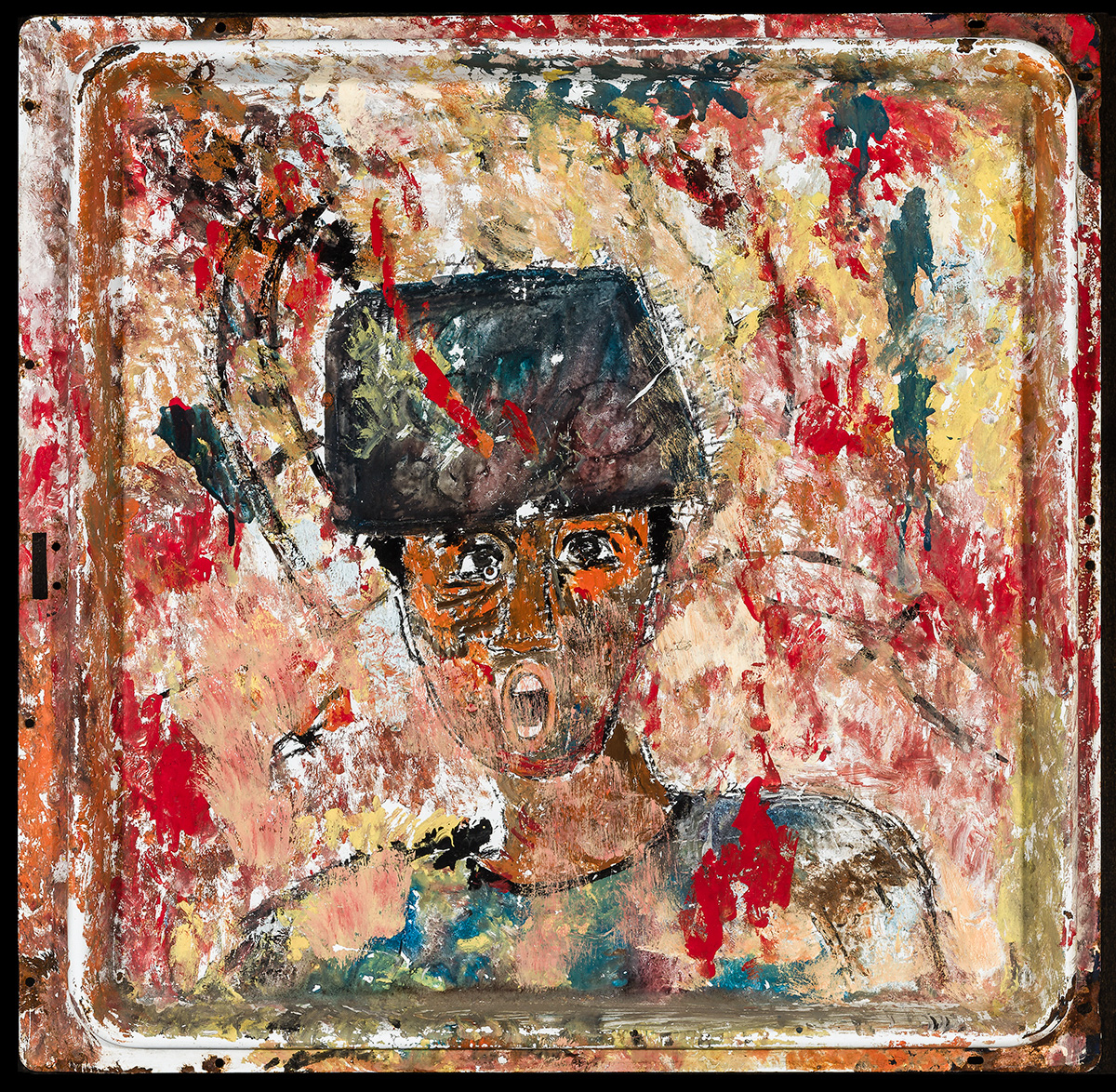Purvis Young
Purvis Young was a self-taught African-American artist who drew inspiration from the urban subculture–– specifically, the decaying neighborhood of Overtown, Miami, where he lived and worked. An astute observer of street life in this once prosperous community (formerly known as the “Harlem of the South”), Young created idiosyncratic works of art on found materials––ranging from discarded pieces of wood, carpet scraps, and pieces of fabric to table tops and castoff books which he painted and then nailed or glued together to produce images that reflected his response to the human condition as he experienced it in the South. Replete with squiggling lines, distorted figures, and vibrant colors, his assemblages exude a raw, emotional quality that reflects Young’s desire, as he put it, to paint “what’s on my mind” (Purvis Young, as quoted in William Arnett, “On Purvis Young’s Mind,” in William Arnett and Peter Arnett, Souls Grown Deep: African American Vernacular Art of the South: Volume Two: Once That River Starts to Flow [Atlanta, Georgia: Tinwood Books, 2001], p. [391]).
Young was born in Liberty City, Miami, on February 4, 1943, to parents of Bahamian heritage. He began drawing as a boy, but eventually drifted away from art. Lacking a high school education, he led a rough and tumble existence which culminated in three years of incarceration (1961–64) at Raiford State Penitentiary for breaking and entering. However, while serving his sentence, Young took up drawing again and was encouraged to develop his talent. He also began perusing art books and magazines, familiarizing himself with the paintings of Rembrandt, Van Gogh, Gauguin, and other artists who explored the emotive power of line, form, and color.
Following his release from prison, Young continued his self-education in art history, spending hours looking at art books in public libraries. He also began executing thousands of small drawings––featuring motifs such as horses and street folk––which he kept in shopping carts and later glued into books and magazines he found in the street. In 1971, he settled in the Overtown district, which had been deteriorating since the late 1960s, when Interstate 95 was constructed directly over the neighborhood, resulting in an exodus of residents who abandoned their homes and businesses. During this period, Young became keenly aware of the downtrodden nature of his new surroundings, as well as the day-to-day struggles endured by those who stayed. Anti-war marches and other protests against the Vietnam War also left an indelible mark on Young’s psyche. He was especially inspired by the activist murals created in communities of color, among them the Wall of Respect mural executed by members of the Black Arts movement in Chicago.Impressed by “how these guys paint their feelings up North, paint on walls,” Young decided to create a mural of his own, using Overtown and its people as his subjects (Young, as quoted in Arnett, p. 392).
He subsequently covered a wall of vacant storefronts (former bakeries), on Overtown’s desolate Goodbread Alley, with dozens of paintings executed on materials taken from the streets, creating a giant panorama of images inspired by his immediate milieu. When artwork would disappear from the wall, Young would simply replace it with another piece. The mural was initially a local phenomenon, but as word of its existence spread, tourists and art aficionados began visiting Overtown to see it, often buying a painting directly off the wall. Young’s early patrons included Bernard Davis, a Miami millionaire and owner of the Miami Museum of Modern Art, who, until his death in 1973, paid for Young’s art supplies. Young’s mural received so much attention in Florida newspapers, and later, in the art press, that he became a local celebrity.
By the 1990s, Young’s reputation had reached a national level, an achievement that was further enhanced in 1999, when approximately 3,000 pieces in Young’s studio were acquired by the Rubell Family Collection in Miami. In 2006, a major retrospective exhibition, Puvis Young: Paintings from the Street, was held at the Boca Raton Museum in Florida. Young, who suffered from diabetes and kidney problems, passed away in Overtown four years later.
Purvis Young
Returning Soldier, 1973
Paint on metal tray
23 1/2 ” x 24″
Provenance
The artist
David Raccuglia, early 2000’s
Arnett Family, Atlanta, Georgia, 2005
Tim Grumbacher, Pennsylvania, 2008
Hirschl & Adler Modern, New York
Private Collection, Michigan, acquired from the above in 2019

